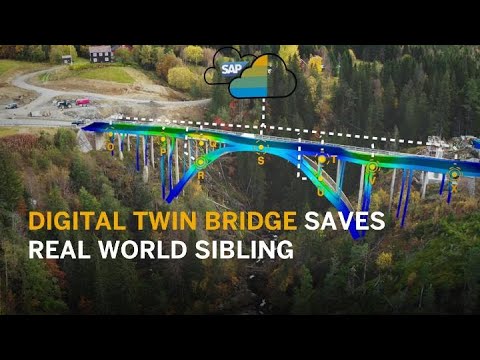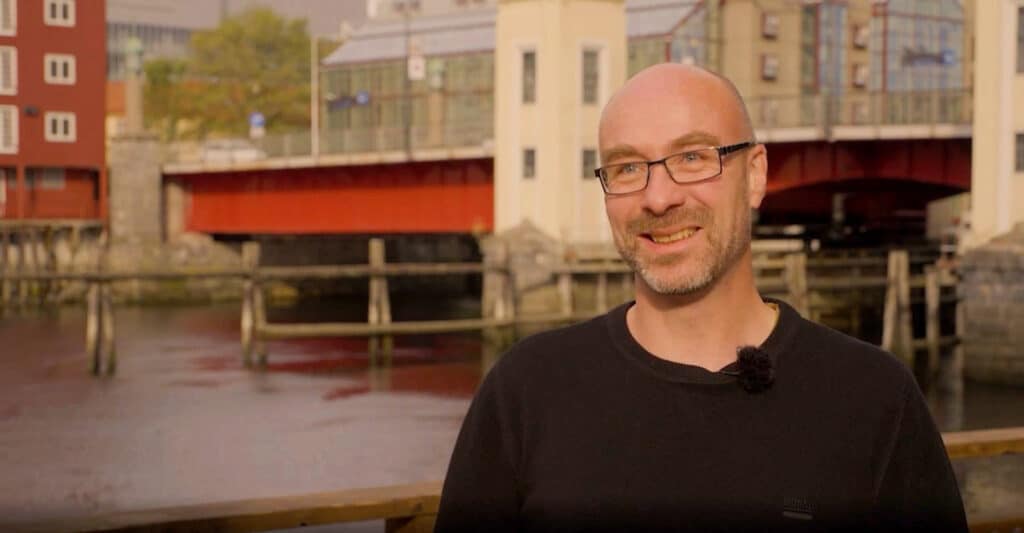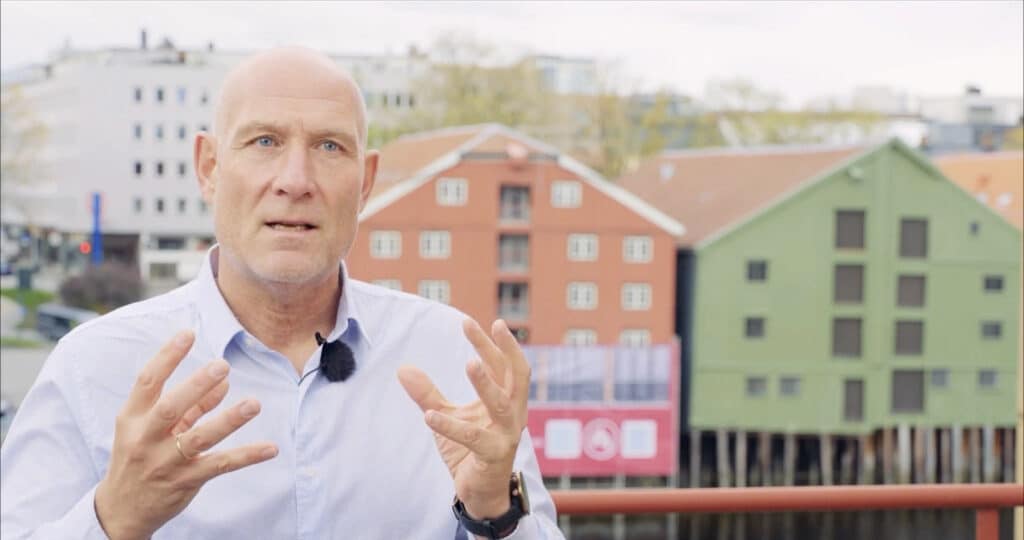There’s not much that can shake up Kjetil Sletten, a senior engineer who manages bridge maintenance for the Norwegian Public Roads Administration (NPRA). But when Sletten received an automated notification in April 2021 that movement sensors on a bridge in central Norway had gone off the scales, his instincts told him he needed to have a look with his own eyes.
Bridges in Norway have an excellent safety record, but the nearly 80-year-old Stavå bridge along Norway’s main north-south highway has been a constant cause for concern to NPRA’s engineers. Like so many older bridges worldwide, the concrete arch bridge was built for less than half the traffic volume and loads experienced today. Even before the April event, trucks were required to cross the bridge at reduced speed in one direction at a time.

Video by John Hunt
When Sletten arrived at the bridge, he felt the reinforced-concrete structure moving under him.
“I saw the end of the bridge moving up and down with each truck passing and thought to myself, ‘This doesn’t look good at all,’” Sletten recalled. Realizing that one of the bridge abutments was floating free of its support, Sletten coolly blocked traffic in the northbound lane with his vehicle and called a road crew to manage traffic.

In the meantime, an interim bridge has been put into operation while a new bridge is under construction.
Detect, Understand, and React in a Critical Situation
Sletten was able to react quickly thanks to a solution from SAP that combines IoT sensors, digital twin technology, and asset intelligence to deliver insight into bridge behavior in real-time. SAP Enterprise Product Development is a new class of tools that authorities can use to monitor their road assets remotely, plan maintenance, and – in extreme cases – predict structural failure.
The average age of Norway’s 5,800 bridges is 36 years, and they undergo routine inspections every five years. The bridges are considered safe, but it was a mixture of intelligent foresight and good fortune on NPRA’s part that the Stavå bridge was being used to test a new real-time monitoring and prediction system using digital twin technology.
“I don’t want to think about what might have happened if we didn’t have this instrumentation on the bridge,” said Trond Michael Andersen, director of Technology, division for Operation and Maintenance, NPRA. “It gave us a lot of insight into the integrity of the bridge and enabled us to detect, understand, and react in a critical situation.”

Much of the wear and tear on bridges is not visible to the human eye. But the latest digital twin technology can recognize stresses before they result in damage to a structure.
“With the cloud solution from SAP, NPRA can react immediately to abnormal behavior and also localize the problem at an early stage in development in locations where engineers cannot inspect visually,” said Marit Reiso, senior project manager for SAP Enterprise Product Development. “This has added benefits, because during routine inspections traffic has to be stopped to look at the entire bridge, and structural problems may not be recognized during non-operational conditions.”
It is important to note that later discovery of the Stavå bridge’s defect would not have resulted in a collapse, but it likely would have resulted in greater damage and required shutdown of the structure and blockage of one of the country’s most important north-south transit routes. As NPRA’s Andersen puts it, “Bridges are not only important because they shorten travel times. They are critical for healthcare services and disaster relief efforts that save lives.” An example of the potential impact on transport is exemplified by the forced shutdown of a major Mississippi River bridge in the U.S.
The clock is ticking on millions of aging bridges around the world. In the U.S. alone, more than 54,000 of the over 600,000 bridges are rated “structurally deficient.” Countries in Europe are also sounding the alarm that without proper monitoring and maintenance, more bridge failures like that of the Morandi Bridge in Genoa, Italy, can be expected.
The problem is expected to worsen as the expanding development in BRIC countries and other growth markets increase the use of roadways.
More Digital, Intelligent, and Automated Roads
Andersen recognizes the advantages of technology for keeping Norway’s roads open and safe. Being a rugged country of islands, peninsulas, and mountains, it has a complex network of 94,000 kilometers of road connected by bridges and tunnels – many of them in remote terrain. NPRA will soon introduce an asset management system for inspection, monitoring, and repair.
“The roads are becoming more digital, intelligent, and automated and the requirements for an asset management system to manage all of the data will only increase. We expect this system to help us become more predictive,” says Andersen. The introduction of an asset management system for a national road system is no simple task, but Andersen takes the long-term view, because he knows that technological change across NPRA must be accompanied by a cultural change.
“We have to adapt best practices and take the lessons learned from other asset-intensive industries to develop our organization, our tools, our methods, and we are integrating all of these aspects,” he says.
As he puts it, technology and data are “part of a large formula” to achieve the needed result: “We are in the middle of this process and it requires a big effort, but we will get there.”



